1. Strychnine sulfate 0.000069 M decreased percentage attachment to the substratum by Amoeba proteus in 0.0029 M NaCl from 77.3 to 1.3, in 0.0029 M KCl from 40.8 to 2.5, in 0.002 M CaCl2 from 73.3 to 68.0, in 0.002 M MgCl2 from 85.5 to 83.3.
2. Frequency of ingestion of chilomonads by Amoeba proteus is increased by adding strychnine sulfate to solutions of NaCl, KCl, or CaCl2. Frequency of ingestion is increased in NaCl solution from 1.3 to 2.3, in KCl from 0.75 to 2.25, and in CaCl2 from 1.1 to 1.9 chilomonads per minute. Ingestion is not significantly increased by the addition of strychnine to MgCl2 solution.
3. Frequency of ingestion of food by Amoeba proteus is not closely correlated with attachment to the substratum in NaCl and KCl solutions to which strychnine sulfate is added.
4. Chilomonads adhere to the plasmalemma of Amoeba proteus in solutions of NaCl, KCl, or CaCl2 containing strychnine, but in MgCl2 plus strychnine only a few adhere to it. Strychnine appears to make the surface of the amebae and chilomonads sticky in the former but not in the latter. Frequency of ingestion is apparently correlated with adherence of chilomonads to the plasmalemma.
5. Attachment to the substratum and ingestion by Pelomyxa carolinensis is increased by dead Chilomonas, Colpidium, and Paramecium in aqueous solutions, by materials obtained from paramecia by alcoholic-ether extraction, and by solutions in which these organisms have lived.
6. Attachment to the substratum by Pelomyxa carolinensis is not closely correlated with kind or concentration of inorganic salts used in this study.
7. Materials were found in extracts of paramecia which had certain characteristics in common with choline esters. There is no reason to doubt that under certain conditions materials are present in aqueous and alcoholic extracts which are pharmacologically similar to choline and acetylcholine.
8. Aqueous suspensions of paramecia when subcutaneously injected into young mice for 21 days inhibit the gonadotropic luteinizing hormone of the pituitary. Ovaries from injected mice showed no corpora lutea, and the seminal vesicles from injected males were smaller and contained less fluid than those of the controls.




